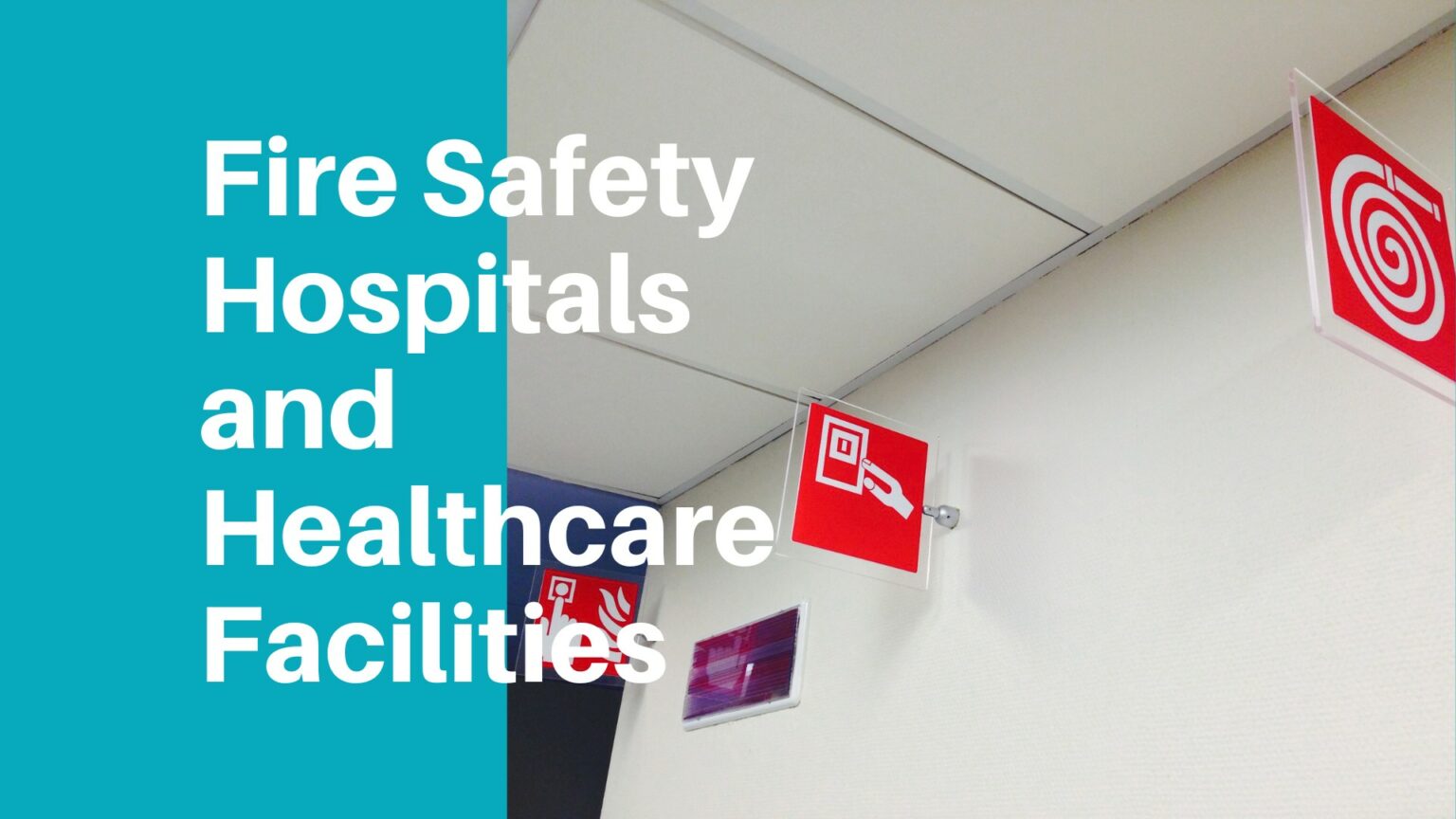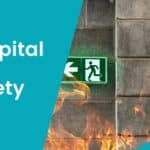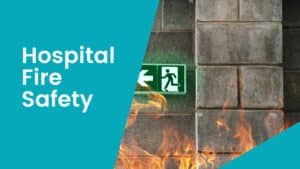Fire safety is critical in any environment, but becomes more challenging in hospitals and other healthcare facilities. In addition to a large, vulnerable population inside, these centers tend to contain electronic and combustible equipment unique to this specific industry. With numerous potential victims who cannot get out easily and hazards throughout the building, fire safety is paramount to operating a safe healthcare facility.
Hospital Fire Safety: Identifying Common Fire Hazards
There are many places in a hospital or healthcare facility where fires could start, which is why the importance of fire safety in hospitals cannot be overstated. Focusing on the riskiest areas might be a good place to start. Some of the most common areas to check for fire safety in hospitals might include:
Rooms with Electrical Equipment
Electrical devices can malfunction and circuits can get overloaded, which is one of the leading causes of fires in healthcare facilities. Regular inventory of your electrical equipment can go far in making sure everything is in working order and minimizing fire risk. When performing an assessment, check the following:
- Cords and plugs are working and in good condition
- None of the outlets are overloaded
- Frayed wires and broken plugs are properly replaced
- Electrical devices are working properly
- No devices are emitting sparks, odors, or smoke
Kitchens
Kitchens are a staple in hospitals and other healthcare facilities and multiple kitchens are often present. Since this is another area where fires are more likely to occur, hospital fire safety needs to include a comprehensive assessment and specific procedures for these rooms. While fires that start in kitchens can often be confined, there is no guarantee that the fire won’t spread to other areas.
Kitchen safety protocols should include:
- Clean cooking equipment daily, particularly fryers and grills
- Store of flammable items away from cooking areas
- Keep charged fire extinguishers in visible and accessible areas
- Empty and clean grease traps and fryers regularly
- Check working smoke detectors regularly
Laundry Rooms
Like kitchens, laundry rooms tend to involve excess heat that can boost fire risk. Lint buildup is another fire hazard. To keep your laundry room fire-safe, follow these steps:
- Clean lint traps regularly – keep a schedule to ensure they get checked daily
- Do not leave over-dried, tightly packed linens on a cart or packed in a cupboard
- Regularly check inlet and exhaust ducts to ensure they are free of lint and debris
- Make sure fire extinguisher and smoke detectors in the room are in working order
Hospital Fire Safety: Fire Prevention Strategies
Hospital fire safety begins with prevention tactics. While addressing the leading causes of fires in healthcare facilities is a good start, there are other fire prevention strategies that can lower the likelihood of a fire occurring. Prevention begins with strict management of smokers, since smoking is the leading cause of fires in residential settings and poses a dangerous hazard for healthcare facilities.
Most facilities do not allow smoking anywhere on the property. Unfortunately, many centers also have to deal with patients who won’t willingly play by the rules. If that is your situation, a designated smoking area situated far away from the building and oxygen tanks may be the best option. You can also install a tip-resistant ashtray in this location to safely dispose of butts.
Fire Safety in Hospitals: Essential Measures No Facility Can do Without
Comprehensive fire safety plans and staff training are a must for any healthcare facility. The plan should include the 4 Principles of Hospital Fire Safety:
- Life Safety – Focus on the personal safety of those in the vicinity, whether that means evacuation, notification, or extinguishing the fire.
- Notification – Notify others through an alarm or intercom system.
- Extinguish – If possible, take steps to extinguish the fire using a nearby fire extinguisher. This step may need to wait until everyone is evacuated.
- Relocate/Evacuate – Move personnel to safer locations by ensuring every staff member knows the evacuation plan for your facility and posting maps of fire evacuation routes.
Hospital Fire Safety: Preventive Measures
Mitigating fire risk is a good first step, but active and passive fire protection methods are also necessary to reduce the impact if a fire does ignite. Compartmentation is an example of passive fire protection, while sprinkler systems and fire extinguishers fall into the active fire protection category.
Compartmentation means containing a fire to the area where it starts. Hospitals employ compartmentation with subdivisions within the building that are separated by fire-resistant walls and floors. Fire doors and windows are also a component of compartmentation.
Sprinkler systems turn on automatically in the event of a fire. They can reduce fire damage by up to 90% by applying water directly to the fire and slowing the spread by watering areas nearby. Fire extinguishers are a more direct method of putting out smaller fires before they grow, which is why facilities should have many accessible extinguishers in plain view.
Fire Safety in Healthcare Facilities: Responding to Fires
If a fire does break out despite your best prevention efforts, your staff should know the process for evacuating people and extinguishing fires as quickly as possible. Training through a fire safety course should be a requirement for everyone on your staff, with refresher courses periodically to keep the knowledge and skills current.
RACE is a common fire safety protocol used by healthcare facilities. The acronym is similar to the 4 Principles of Hospital Safety and stands for:
- Rescue – Assist anyone who needs immediate help to evacuate the fire if you can do so safely.
- Alarm – Once you are out of immediate harm, sound the fire alarm to notify firefighters to the fire.
- Confine – If possible, confine the flames by closing windows and doors to prevent the spread of the fire.
- Extinguish/Evacuate – Attempt to extinguish the fire yourself if possible before firefighters arrive. If the fire is too big to extinguish safely, focus on evacuating yourself and others.
The Importance of Fire Safety in Hospitals: Training is Everything
The importance of fire safety in hospitals and healthcare facilities cannot be overstated, which is why healthcare fire safety training should be a priority for your entire staff. Regular training sessions ensure everyone in your facility has the skills and knowledge they need to perform effectively if a fire ever occurs.
Surefire CPR offers individual and group fire safety training with certification. Classes are online, allowing everyone on your team to participate from the convenience of any location. CEs are also available for EMS and Board of Nursing. Contact Surefire CPR today to learn more about our course offerings.











